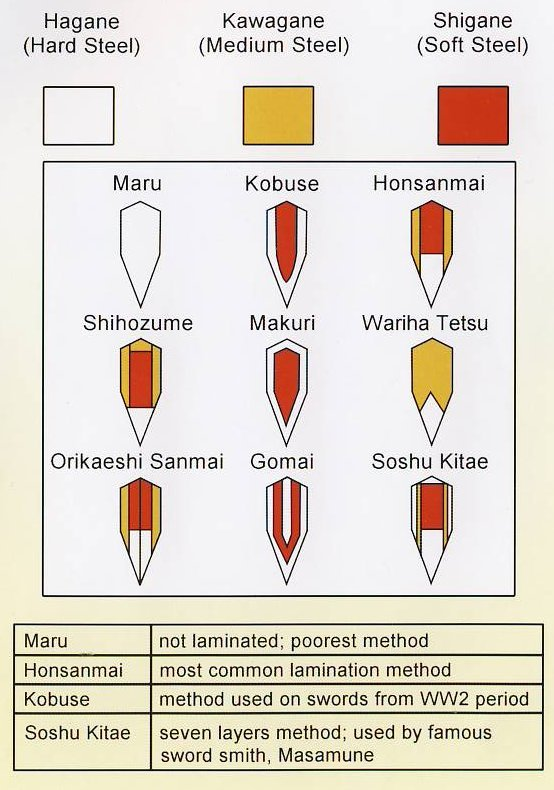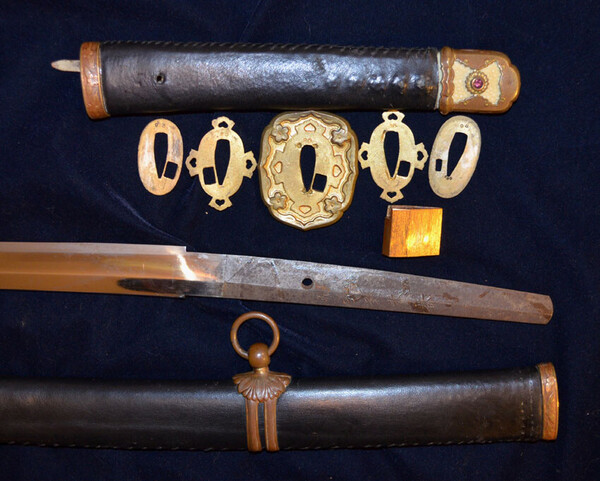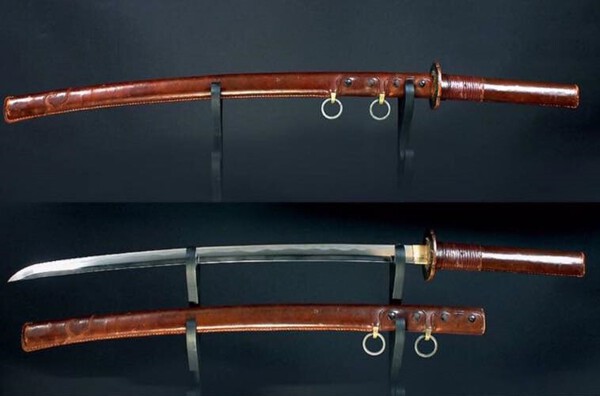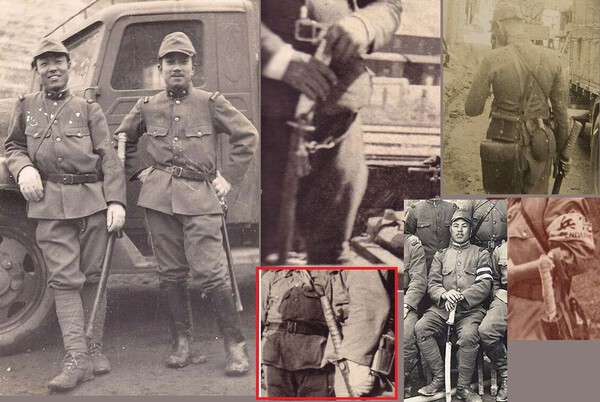-
Posts
1,690 -
Joined
-
Last visited
-
Days Won
11
Content Type
Profiles
Forums
Events
Store
Downloads
Gallery
Everything posted by Dave R
-
I remember " Ryujin swords" (there is more than one firm using the name) mentioning going through the skin of a Gunto, after a Japanese polisher had refused to touch it, telling him it would just be a chunk of modern steel. In fact, it's the reason they did that very handy guide about Showa manufacturing methods, which now looks to have disappeared off the internet I will post that again, and also 2 very handy diagrams about construction of blades, and apologies if this info' is redundant.
-
If you are banging nihonto out for the war effort, a thin skin makes sense. You get a resilient blade that will bend rather than break, and who cares about multiple polishes down the line, there is a war on!
-
There is a separate thread on the development of the IJA spade from Nick on Japanese Militaria. Being a nerd fan of Nick's I read it all the way through. They were made of modern "bulletproof" steel, with a pointed socket to stick in the ground, and a spy hole in the base of the blade...... Which is just so Japanese when you think of it.
-
I think it's a step too far to say they made spades out of Tamahagane.. The spades were made out of bullet proof steel as they were used as part of field fortifications, which is very different.
-

"Memoir of a Gunto Dealer" - A must read!
Dave R replied to Bruce Pennington's topic in Military Swords of Japan
The article rewards a second reading, it was 1937, so just 4 years into the China Incident, and a special event "hosted" in the Dept. store and managed by the Osaka Sword Club. The original article also mentions the amount of money subbed' by the Army, but it was not enough to cover all necessities. Inflation was already eating into it's value. The club had swords at 100 to 200 yen, but again money was tight, and some wanted a better blade for their beloved. -
My first thought when I saw this was that it "might be" one of those Bakumatsu era Toppei Koshirae. They can certainly get weird enough for this to be one.
-
Late war fittings are a variable beast. They can be the usual metal but devoid of detail, or with all the detail but in a less strategic material. The above example is the former type, note it has Gunto menuki. Below are two that are in my collection, one of each type..... and a note from a knowledgeable commentator. The plain mounts are plated brass as was regulation. The detailed mounts are of plated steel, and the ito over sandpaper. The note describes minimal alterations for service use.
-
Judging by the saya, the blade was originally in Buke koshirae. I think it worth remembering that for Japan, the war began in 1933, so 1942 was late war!
-
I noticed the habaki as well, so I am inclined to think it's a bit of a mix and match to a greater or lesser extent, the which is not at all uncommon! I rather like it as well, and would be very happy to have it in my collection. As for wear, if it was a gunzoku sword, chances are it spent more time in a sword rack than hung on a belt.
-
Recycling old brass items is done over here as well, for some reason the modern stuff just does not match in on old items, and a nice engraving is a bonus. A little brass tumbler I have is about to go that rout and become a ferrule on a nice pamor bladed Pedang that currently has a dealers bodge job on it. At risk of causing an uproar, what do you think about the hada on this one....
-
A friend of mine is currently repairing/restoring one of his Teppo. He says that one of the problems is getting the right quality of brass/bronze. Most of the modern stuff is casting brass which does not work up well. I tell him to go for "gilding metal" which is made for working cold, but he doesn't like the colour.
-
I had read that one reason for the change in shape was to aid a faster draw which was characteristic of of certain schools and techniques.
-
Well you're not likely to find anything other than a factory stamp or a number anyway, so no big deal. Regarding the custom v production status of the mounts, from what I can see without modern (as in late 20thC) vacuum casting, they involve a lot of hand finishing even on the standard pieces. I suspect lost wax investment casting for the most part with hand finishing, especially for the nanako background on the tsuba, so a custom piece is not that unlikely.
-
It has been my experience shooting muskets and black powder cannon that a smoke ring is as much to do with atmospherics as the load. High humidity seems to be a factor.
-
It has been my experience that when a blade has been made to take two mekugi, that the ana are further apart. You see a lot of wakizashi with the same spacing of two mekugi ana, and I believe it's because of the change in the allowed length of a Samurai Wakizashi, leading to blades being cut down.
-
I have read elsewhere that the tight shrunk and sewn on leather covers were a quick and dirty fix for dubious tsuka on donated swords. You also see them in place of the ito, straight over the same or bare wood tsuka.
-
I have seen a few of them, (personal opinion) I think that given the smooth finish, the bulk and the lacing, that they would have been removed before combat, when possible.
-
They varied a lot..... Sometimes you got carefully stitched and shrunk on leather covers as well, as seen in the red outlined picture. Also note the wrapped saya in the pic.next to it.
-
-
Texas Matt, please start another separate thread for your sword, otherwise it gets very confused and useless. and we don't know which sword is being discussed.
-
A lot of swords in various armies had chromed blades in the early 20thC . One of those things that was popular for a time and then the problems made themselves apparent. As a collector I avoid them because you never know what is going on under the plating. Stainless is now the go to for parade swords..... and I avoid them as well.
-
Chroming a blade seems to be fairly common in the early 20th C and not just on Shin Gunto. I think it comes under the heading of "one of those good ideas, that didn't work out".
-
It's always funny when you see a friend in these videos. James Green also fields full size cannon at events.
-
Put these up on the military section.
-
It could be so, but double hangers were a feature of Naval swords. I think it is an old sword but with a sewn on leather cover, and double hangers fitted on leather straps under the cover. Traditional and Kai-Gunto haikan were bigger and more elaborate. According to Mr Komiya over on Warrelics.eu the NLF was far from elite and at the bottom of supply chains. That said, a lot of old swords were carried and used in this manner. https://www.warrelics.eu/forum/Japanese-militaria/Japanese-navy-canteen-664051-2/?highlight=reservists








.thumb.jpg.a26bf464b818e1b0c7ce7de46d510402.jpg)









